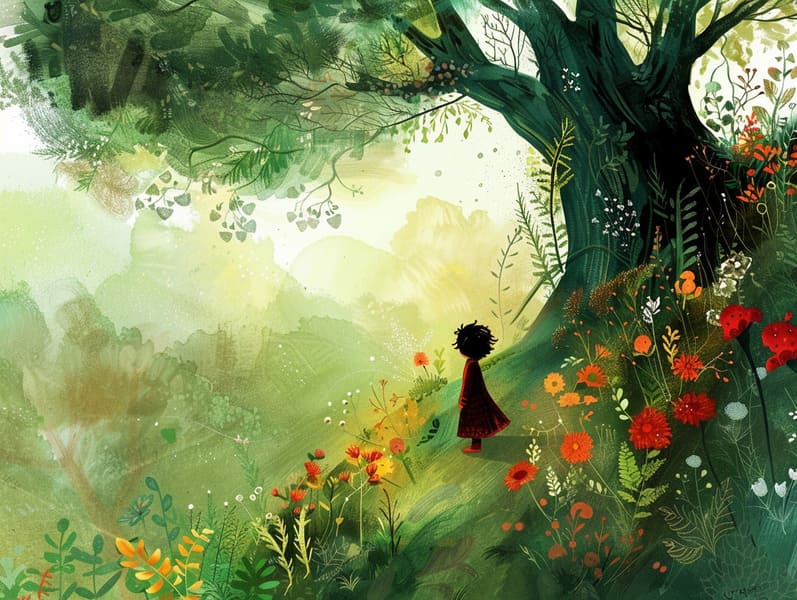The Beginning of Fairy Tales for Kids with Its Invariable Splendor.
The Beginning of Fairy Tales for Kids with Its Invariable Splendor.
Blog Article

Vintage fairy tales have historical significance. These narratives have been conveyed from one generation to the next well before they were ever published. They arose from a variety of backgrounds, including Indigenous traditions. They were initially told among adults, often carrying themes and messages aligned with the societal norms and beliefs of the time.
The Grimm brothers, Jacob and Wilhelm, were among the first to gather and publish many of these beloved fairy tales. Their anthology, "Grimm's Fairy Stories," included tales like "The Story of Cinderella," "The Story of Hansel and Gretel," and "Schneewittchen," which have since become mainstays in the world of timeless fairy tales. Similarly, H. C. Andersen's fantastical fairy tales, such as "The Mermaid," and "The Ugly Duckling," have won hearts worldwide, guaranteeing their place in the pantheon of famous fairy tales.
Though they are centuries old, fairy tales remain as applicable as ever, especially as nighttime stories for kids. These enchanting tales are now available in diverse formats, including beautifully illustrated books, whimsical animations, and online storybooks.
Their continued relevance can be ascribed to several whimsical characteristics:
Significant Morals: Traditional fairy tales often whisper important moral lessons. Tales like "The Wolf and the Liar" teach the value of sincerity, while "The Tortoise and the Hare" exemplify the qualities of steadfastness and humility. These narratives offer the young clear distinctions between moral and immoral, helping to shape their moral compass in a subtle yet impactful way.
Warmth and Understanding: Traditional fairy tales frequently involve individuals facing challenges and struggles, urging listeners to identify with their struggles and support their triumphs. For instance, "Beauty and Her Beast" shows us the merit of valuing inner qualities to understand the real character of a individual, fostering insight and comprehension.
Cultural Awareness: Many old fairy tales are rooted in the cultural contexts from which they sprang. Delving into these narratives can provide captivating looks into different cultures, fostering a sense of global appreciation and comprehension.
Imagination and Creativity: The extraordinary elements in fairy tales—enchanted lands—enliven children’s fantasy worlds. These stories bring readers to mythical realms, revitalizing creative ideas and a sense of mystery that stays a lifetime.
Traditional fairy tales are not only entrancing but also instructive. They serve as alluring tools in advancing various cognitive and emotional skills in young readers. When traditional fairy tales are read aloud, they advance speaking abilities by bringing new terms and meanings and complex sentence structures. This practice also nurtures listening abilities and mental focus, as young readers track the narrative, ready to see what happens next.
Furthermore, talking about the themes and characters of fairy tales can enhance critical thinking and thought processes. Kids are guided to notice patterns, forecast, and get cause and effect. These analyses also facilitate the young voice their thoughts and feelings, advancing their emotional intelligence.
In today’s online age, the existence of online fairy tales has made these tales more acquirable than ever. Online platforms and web apps feature ample collections of famous fairy tales that can be looked at or listened via anytime, anywhere. Fairy tales recited are particularly favored, giving an charming way for the young to relish these captivating stories. Read-aloud stories and narrated videos lead characters and settings to life, often augmented by mesmerizing melodies and musical scores that amplify the narrative adventure.
The everlasting appeal of classic fairy tales lies in their ability to evolve to contemporary times while keeping their essential themes. Contemporary reimaginings of these stories often spotlight more inclusive characters and modern settings, making them accessible to today’s audience. However, the core values of braveness, goodness, and truth remain unchanged, continuing to affect audiences more info of all ages.
Old fairy tales also offer a sense of security and knownness. They give a well-structured narrative with a clear beginning, middle, and end, often drawing to a close with the resolution of conflicts and the triumph of virtue over wickedness. This dependability can be solacing for young readers, allowing a sense of invariability in an unpredictable world.
Classic fairy tales continue to spellbind and coach new generations, maintaining their attraction and impact in modern society. As bedtime stories for kids, they bestow a perfect blend of wonder and wisdom, furthering moral values, empathy, and creativity. The availability of online storybooks and the well-received status of fairy tales recited make sure that these timeless narratives remain reachable to new generations.
By retaining and passing on these narratives, we continue to treasure the rich tapestry of legends and cultural heritage. Whether you are seeing a vividly illustrated book, enjoying a cyber collection, or listening on an read-aloud story, the wonder of traditional fairy tales is always within reach. These narratives demonstrate of the endless essence of tales and its ability to join us across time and space.
Even if you are perusing a vividly illustrated book, enjoying a web-based library, or listening to an read-aloud story, the mystique of ancient fairy tales is always within reach.
These tales remind us of the ageless ability of storytelling and its ability to hold us together across time and space, creating a bond that captivates and teaches alike.